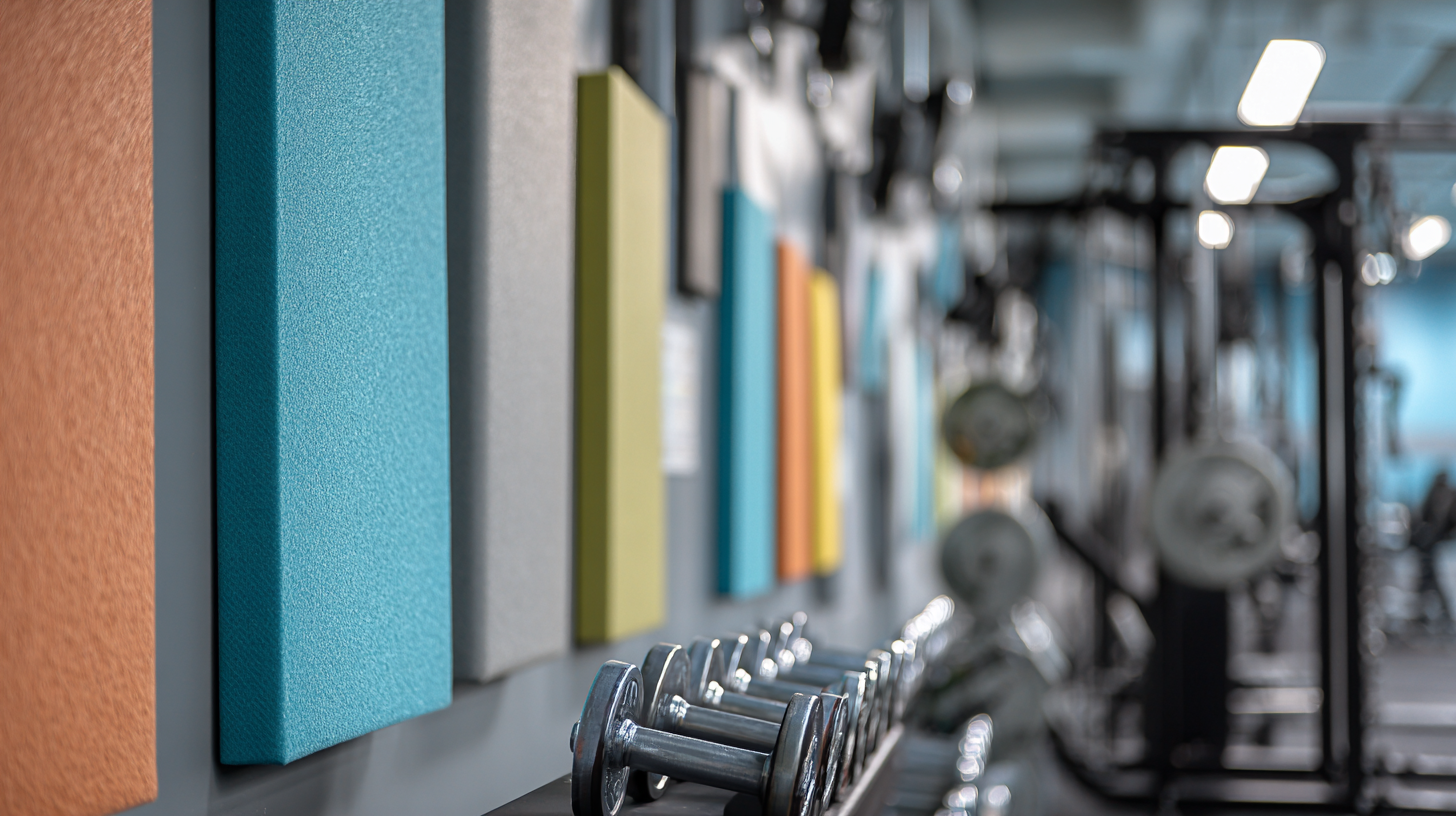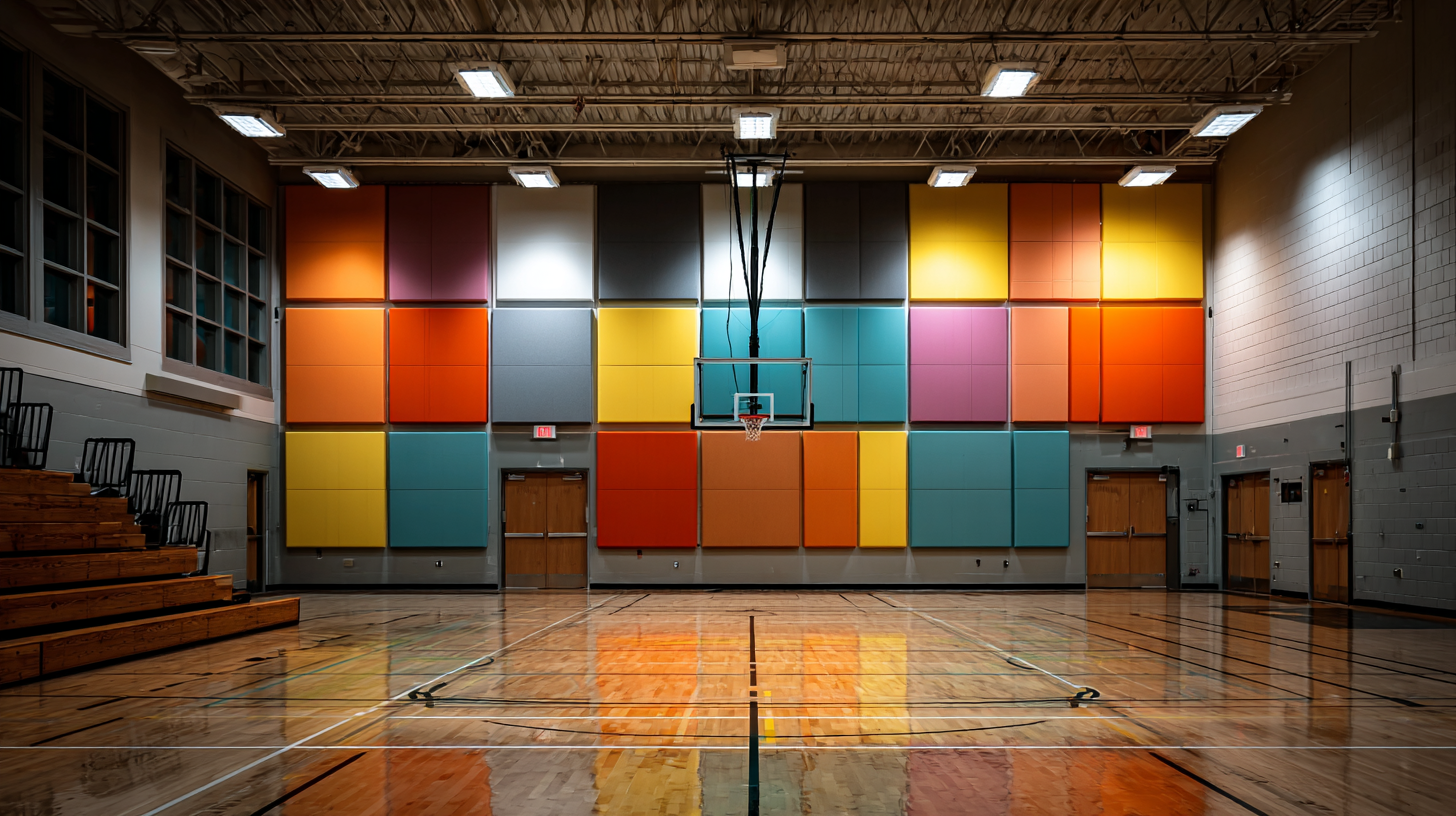
Step inside almost any gymnasium and you’ll notice it immediately. Clap your hands or raise your voice, and the sound seems to bounce endlessly. This happens because gyms are designed as large, open spaces with hard surfaces. Concrete walls, wooden floors, and tall ceilings reflect sound instead of absorbing it. That reflection creates reverberation, or echo.
The problem gets worse because gyms usually lack soft furnishings. Unlike offices or homes filled with carpets, curtains, and upholstered furniture, a gym has little to absorb sound energy. Every bounce of a basketball, every whistle, every word from a coach lingers longer than it should. Understanding this is the first step in answering the question of how to reduce echo in a gym.
Once you know why it happens, the solutions make sense. Sound needs to be absorbed or redirected. Without treatment, even the best sound system will struggle to cut through the chaos of reflections.
Why Reverberation is a Problem in Gyms and Multipurpose Halls
Reverberation might seem harmless at first, but it creates a cascade of problems in practice. A space that echoes constantly can feel overwhelming, confusing, and even unsafe.
Poor speech intelligibility
One of the biggest issues is clarity of speech. In a reverberant gym, voices blend together. Coaches find it hard to give instructions. Students miss important announcements. Emergency messages become difficult to understand. This is not just inconvenient—it can compromise safety during large gatherings.
Problems during sports and fitness activities
Echo also affects how people perform in sports and fitness classes. Instructions in group workouts get lost in the blur of reflections. Players on the court struggle to hear each other. In high-energy environments, where communication is essential, excess reverberation makes everything harder. Instead of motivation and focus, participants experience frustration.
Why would reverberation be a problem when using a gym for a concert
Many schools and community centers transform their gyms into venues for concerts, plays, or ceremonies. That’s when reverberation becomes even more noticeable. Music loses its richness and turns muddy. Words sung or spoken on stage blur together. Audiences complain about the sound quality. This is exactly why reverberation would be a problem when using a gym for a concert. Without acoustic treatment, a performance space cannot deliver a good experience.
Key Acoustic Principles for Large Spaces
Before fixing the problem, it helps to understand the science behind it. Large spaces behave differently from small rooms, and gyms magnify those differences.
Absorption vs reflection
Sound waves interact with surfaces in two ways: they are either absorbed or reflected. Hard, smooth materials like concrete or glass reflect nearly all the energy. Soft, porous materials like fabric or specialized panels absorb it. Reducing echo in a gym depends on tipping the balance toward absorption.
Importance of surface treatment
The surfaces that dominate a gym—walls, ceilings, and floors—need treatment. Adding absorption to just one area often helps, but full control comes from addressing multiple surfaces. Treating walls with panels, hanging baffles from ceilings, or using sound-absorbing materials on dividers all contribute to controlling echo.
Role of room shape and volume
Shape and size play roles, too. A rectangular box with parallel walls creates strong echoes. A gym with extremely high ceilings amplifies reverberation time. While you can’t always change architecture, you can adapt treatments to the geometry. This is why professionals evaluate each space individually before recommending products.
Understanding these principles provides the foundation. With them, gym owners can make smart choices instead of random fixes.
Effective Solutions for Reducing Echo in Gyms

Now that we’ve covered the problems and the science, let’s focus on solutions. Tackling echo in gyms requires a combination of acoustic treatments tailored to the size and function of the space.
Gym and Gymnasium Acoustic Panels
When it comes to solving echo problems, wall panels are one of the most effective solutions. Whether you are treating a small fitness center or a large school sports hall, acoustic panels absorb sound and shorten reverberation time.
The term gym acoustic panels is often used for smaller workout areas or fitness clubs. These panels are designed to handle spaces where music, instructions, and exercise noise need control.
On the other hand, gymnasium acoustic panels usually describe larger, heavy-duty panels made for school gyms, multipurpose halls, and arenas. These spaces are bigger, have higher ceilings, and require wider coverage.
While the names differ, the goal is the same: reduce echo and improve clarity. By choosing the right size and density, panels can transform noisy environments into spaces where speech is clear, music sounds natural, and activities run smoothly.
Acoustic ceiling baffles and clouds
Ceilings are often overlooked, yet they play a critical role in reverberation. Acoustic baffles and clouds hang from the ceiling, creating additional surfaces that absorb sound. Their suspended design captures noise traveling upward and prevents it from bouncing back down.
This type of treatment is especially effective in gyms with extremely high ceilings. Baffles can be arranged in rows, while clouds add a decorative element. Together, they enhance absorption while preserving the open feel of the space.
Adding curtains, dividers, and soft materials
Not every fix requires construction. Even temporary solutions can help. Heavy curtains on windows, padded dividers between courts, or large fabric banners all contribute to absorption. While these won’t replace gym acoustic panels, they provide supplemental benefits.
Schools often use retractable dividers, which, if made from sound-absorbing materials, double as acoustic treatment. These small steps reduce reflections and improve the listening environment for students, players, and audiences.
Soundproofing and Acoustic Products from Sound Pro Solutions
Once gym owners understand the problem and possible solutions, the next step is choosing the right products. This is where professional suppliers like Sound Pro Solutions make a difference. Their catalog includes specialized acoustic and soundproofing products designed for large, reverberant spaces.
Gymnasium acoustic panels
For larger facilities, gymnasium acoustic panels provide broader coverage. These oversized units are ideal for schools, universities, and community centers where thousands of square feet need treatment. By covering wide sections of wall or ceiling, they quickly reduce reverberation and create a more controlled acoustic environment.
Acoustic ceiling baffles and clouds
Sound Pro Solutions also supplies ceiling treatments. Hanging baffles and clouds come in a range of styles and finishes. They add not only performance but also visual appeal. Designers can choose arrangements that complement the architecture while solving echo problems.
Green Glue and isolation products
Sometimes, gyms need more than just echo control. When sound leakage between spaces is an issue, products like Green Glue damping compound and isolation clips come into play. While their main role is vibration control and soundproofing, they also support the broader goal of soundproofing a gymnasium for multi-use purposes.
Seals and accessories
Finally, small details matter. Door seals, acoustic caulk, and related accessories help close gaps that otherwise allow noise to escape. When combined with panels and baffles, these finishing touches ensure the acoustic system performs at its best.
Practical Tips for Gym Owners and Managers
Acoustic projects can feel overwhelming, especially for large spaces like gyms. But breaking the process into steps makes it manageable. Here are some practical tips for owners, managers, and decision-makers:
Measure reverberation first
Use apps or professional tools to check how long sound lingers in your gym. This simple step gives you a clear baseline and helps track improvements once treatments are in place.
Prioritize wall treatments
Walls are the biggest reflective surfaces. Adding gym acoustic panels is often the quickest way to reduce echo and improve clarity.
Don’t forget the ceiling
High ceilings make reverberation worse. Installing acoustic baffles or clouds overhead can bring significant improvements to sound quality.
Start with key zones
If the budget is tight, focus on the most important areas first. Treating spaces near spectator seating, courts, or stages often delivers the best results.
Mix permanent and flexible solutions
Combine fixed panels with movable elements like curtains, dividers, or soft furnishings. This layered approach makes acoustic treatment more affordable and versatile.
Balance acoustics and safety
Gyms are active environments, so products must be both effective and tough. Fire-rated, impact-resistant panels are essential for durability and compliance.
Work with professionals
Acoustic projects benefit from expert input. Specialists ensure the right number and placement of products. Companies like Sound Pro Solutions provide guidance along with proven materials.
Addressing echo is not just about sound quality. It’s about creating environments where people can communicate clearly, enjoy performances, and stay safe. A well-treated gym supports sports, events, and community activities with equal success.
Recent posts




